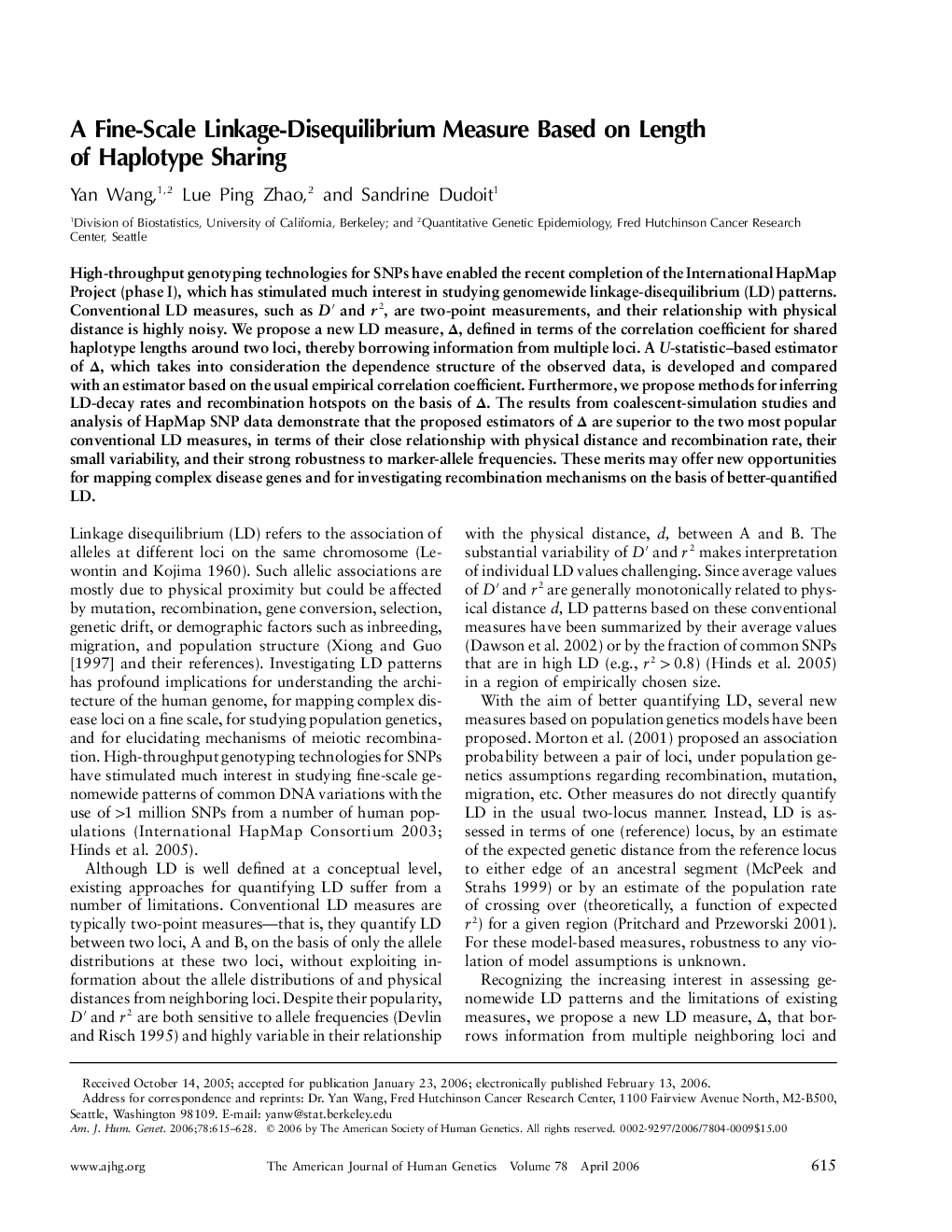| Article ID | Journal | Published Year | Pages | File Type |
|---|---|---|---|---|
| 2812418 | The American Journal of Human Genetics | 2006 | 14 Pages |
High-throughput genotyping technologies for SNPs have enabled the recent completion of the International HapMap Project (phase I), which has stimulated much interest in studying genomewide linkage-disequilibrium (LD) patterns. Conventional LD measures, such as D′ and r2, are two-point measurements, and their relationship with physical distance is highly noisy. We propose a new LD measure, Δ, defined in terms of the correlation coefficient for shared haplotype lengths around two loci, thereby borrowing information from multiple loci. A U-statistic–based estimator of Δ, which takes into consideration the dependence structure of the observed data, is developed and compared with an estimator based on the usual empirical correlation coefficient. Furthermore, we propose methods for inferring LD-decay rates and recombination hotspots on the basis of Δ. The results from coalescent-simulation studies and analysis of HapMap SNP data demonstrate that the proposed estimators of Δ are superior to the two most popular conventional LD measures, in terms of their close relationship with physical distance and recombination rate, their small variability, and their strong robustness to marker-allele frequencies. These merits may offer new opportunities for mapping complex disease genes and for investigating recombination mechanisms on the basis of better-quantified LD.
